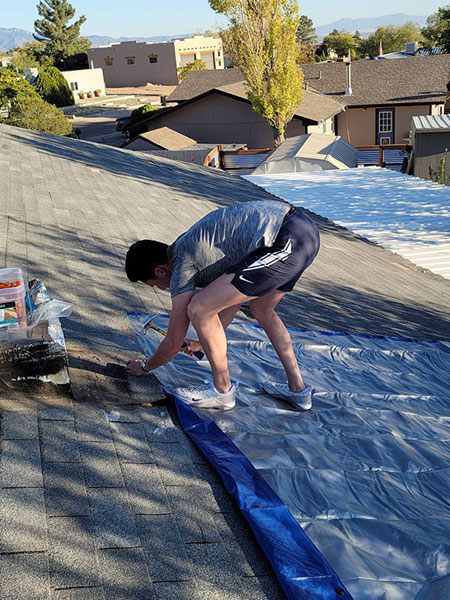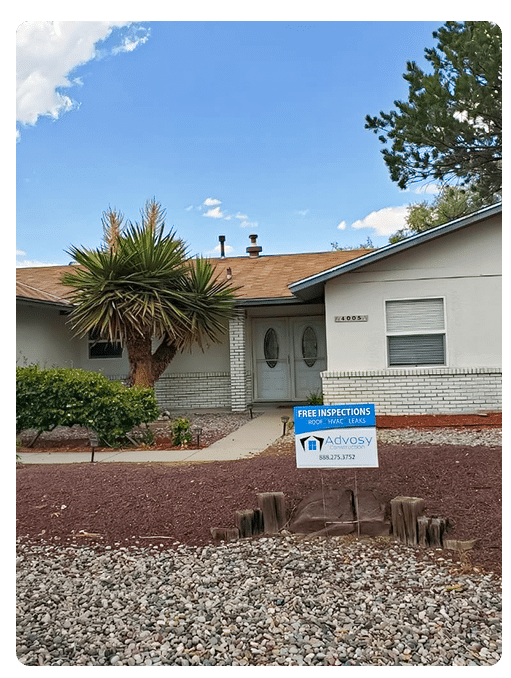The roof is an integral part of any structure, providing protection from the elements and ensuring a sense of security for those within. Understanding how to build a perfect roof requires knowledge about its anatomy and construction techniques.
This article provides insight into the science behind building a well-built roof that can withstand extreme weather conditions while remaining aesthetically pleasing. The goal of this article is to explore the various components that make up a perfect roof, as well as analyze best practices in constructing one.
In doing so, readers will gain an understanding of the different materials used, their roles in creating a reliable structure, and what steps are necessary to ensure strength and longevity. Additionally, methods for maintaining roofs and keeping them in good condition over time will be discussed at length.
Types Of Roofs
Roofs come in many shapes and sizes, ranging from simple flat roofs to more complex designs. The type of roof that is best suited for a particular structure depends on the climate, local building materials, and aesthetic considerations.
A gabled-roof is one of the most common types of residential roofs. This design features two sloping sides that meet at an apex, creating an inverted V shape when viewed from the side. While this style offers enhanced durability and weather resistance, it may not be suitable for areas with heavy snowfall or high winds due to its exposed surface area.
For these climates, gambrel or mansard roofs are better choices as they provide increased protection against harsh weather conditions by providing more coverage over the walls below them.
The Structure Of A Roof
A roof is a complex structure designed to protect the interior of a building from elements such as rain, snow, and extreme temperatures. It typically consists of several layers: an outermost layer made up of shingles or tiles, followed by an underlayment that provides additional protection against moisture and leaks.
Below this is the primary structural element—the rafters—which provide support for the entire system. These are held in place with trusses and other fastening devices that connect them securely to the walls.
The final piece of the puzzle is insulation which helps keep heat inside during cold months, while keeping it outside on hot days. All these components work together to form a cohesive whole, ensuring maximum efficiency and resilience against harsh weather conditions.
Installing a well-built roof requires careful attention to detail and skillful craftsmanship. From selecting materials appropriate for your climate to laying out rafters correctly and applying adequate insulation, there are many steps involved in creating a strong yet aesthetically pleasing rooftop structure.
Professional contractors understand how each component interacts with one another, allowing them to build sturdy structures capable of lasting decades without needing major repairs or replacements. Ultimately, having an expertly built roof can save homeowners money over time due to its durability and energy-saving qualities.

Roof Framing
The frame of a roof is the essential foundation on which all other elements are built.
Every component must be carefully constructed, from the rafters to trusses and joists.
Each piece should fit together seamlessly for maximum structural stability and water-tightness.
The framing is what provides support for the entire structure, as well as acting as an anchor point for insulation, shingles, and any additional features such as skylights or cupolas.
Inspectors will ensure that each element meets building codes before installation can begin.
In order to construct a strong roof frame, it’s important to understand how each part works together in harmony with one another.
This includes selecting appropriate materials like lumber grade and size according to local codes; properly installing flashing along edges where moisture could enter; laying out complex angles accurately with jigsaws; securely nailing through sheathing into rafter tails; and solidly tying down ridge boards at peak points.
When done correctly, these steps will create a sturdy framework upon which every other aspect of construction rests – thus guaranteeing your roof stands up against even the harshest conditions nature throws its way.
Roofing Materials
The framing of a roof is the foundation upon which a well-built roof is built. It provides support for the entire structure, and therefore must be designed with precision to ensure it will stand up against natural forces such as wind and rain.
Roofs typically consist of rafters that are connected together by joists or trusses in order to form an angled shape, known as pitch. The pitch is determined based on factors such as climate and snow load requirements, among other things.
Now that we have discussed the anatomy of a properly framed roof, let’s take a look at what materials are used to finish off this structure. Most roofs are covered using either asphalt shingles or wood shakes/shingles; however there are many different types of materials available depending on your budget and desired aesthetic.
Commonly used materials include metal tile, clay tiles, slate tiles, synthetic rubber membranes (EPDM), modified bitumen sheets and liquid applied systems like elastomeric coatings or polyurethane foam insulation. Each material has its own unique benefits including durability, fire resistance and energy efficiency.
Installation Process
The installation process for a well-built roof is as important as the materials used in its construction. It is essential to ensure that all components, including sheathing and flashing, are properly secured so that they can withstand wind loads and maintain an airtight seal against water infiltration.
The first step of the installation process involves constructing a weatherproof frame by installing rafters or trusses at the appropriate spacing and elevation. Once this framework has been constructed, it should be inspected for accuracy before proceeding further with any other steps.
Next, plywood or OSB boards must be fastened securely to each rafter/truss in order to serve as a base for subsequent layers of protection. Exposed edges of these boards must also be sealed tightly with caulking or self-adhesive membrane strips to prevent moisture from seeping through them.
Afterward, felt paper should be installed on top of the sheathing in order to provide additional protection against rainwater penetration and help create an even surface for shingles. Finally, roofing materials such as asphalt shingles or metal panels should be laid out according to manufacturer’s guidelines using nails that have been galvanized to prevent rusting over time.
Careful inspection after completing the installation will confirm whether your roof has been built correctly and is ready for use.

Maintenance And Repair
The installation process of a perfect roof is an important part of ensuring its longevity and effectiveness. Properly installing the components, from tiles to insulation, helps ensure that the roof will provide optimum protection for years to come.
However, even with proper installation, regular maintenance and repair are still necessary in order to keep it in good condition over time.
Regular inspections should be performed at least twice annually; once after winter when snow damage can occur, and again during spring or summer before extreme heat arrives.
During these times any loose materials such as shingles or nails should be reattached if found out of place, and flashing around chimneys or vents checked for cracking due to weather exposure.
Additionally, any signs of water damage should be repaired promptly since this can lead to more serious underlying issues like wood rot which may require costly repairs down the line.
Benefits Of A Well-Built Roof
The construction of a well-built roof is an art form that can have many benefits. From the moment one begins to plan out their new roof, they are presented with an array of options and features that will best suit their home’s particular needs.
With careful consideration given to materials, engineering design, installation techniques and long-term maintenance procedures, homeowners can rest assured knowing they chose the most appropriate roofing system for their budget and environment.
A properly built roof provides shelter from harsh weather conditions while also serving as an aesthetic feature of a residence or commercial building. A quality roof not only adds value to a property but in many cases helps reduce energy costs due to increased insulation and airtightness.
Further advantages include improved safety standards by preventing moisture infiltration through proper drainage systems and wind resistance when constructed using durable materials like metal or shingles designed specifically for extreme climates.
No matter what type of project it may be – whether residential or commercial – investing in a well-crafted roof should always be considered; both for its protective qualities and overall contribution to improving one’s living space.
Conclusion
A well-built roof is an essential part of any home’s structure. It provides protection from the elements and adds to a home’s aesthetic appeal. Understanding the anatomy of a roof, such as the different types of roofs, framing materials, installation process, and maintenance requirements is important for building a quality roof that will last for years.
The benefits of having a strong roof are great, including improved energy efficiency, better aesthetics and increased property value. Investing in proper construction techniques and regular maintenance can ensure that your roof will provide reliable protection for many years to come.


